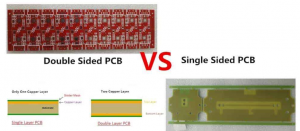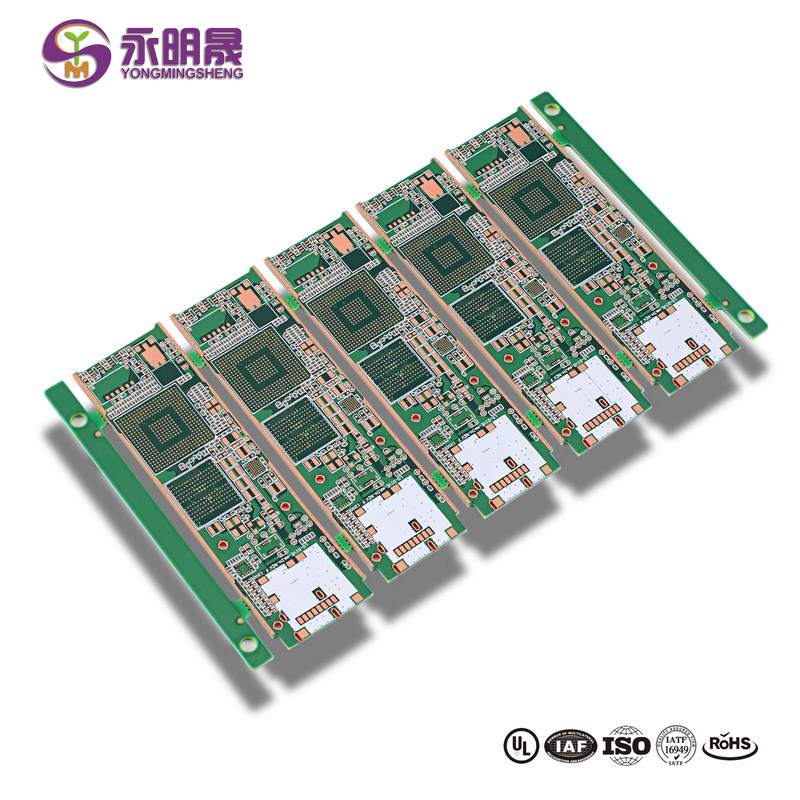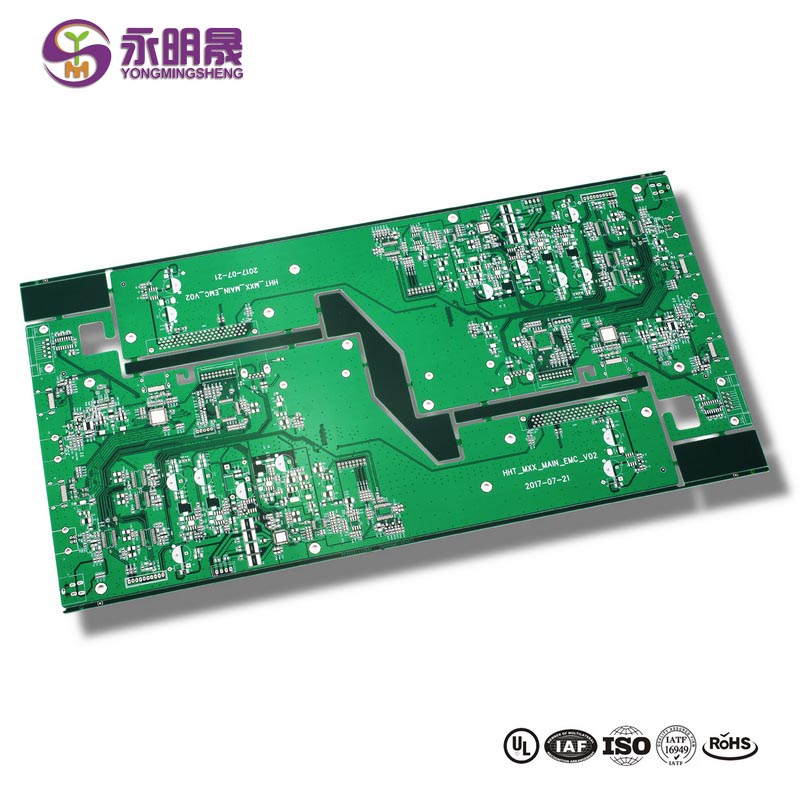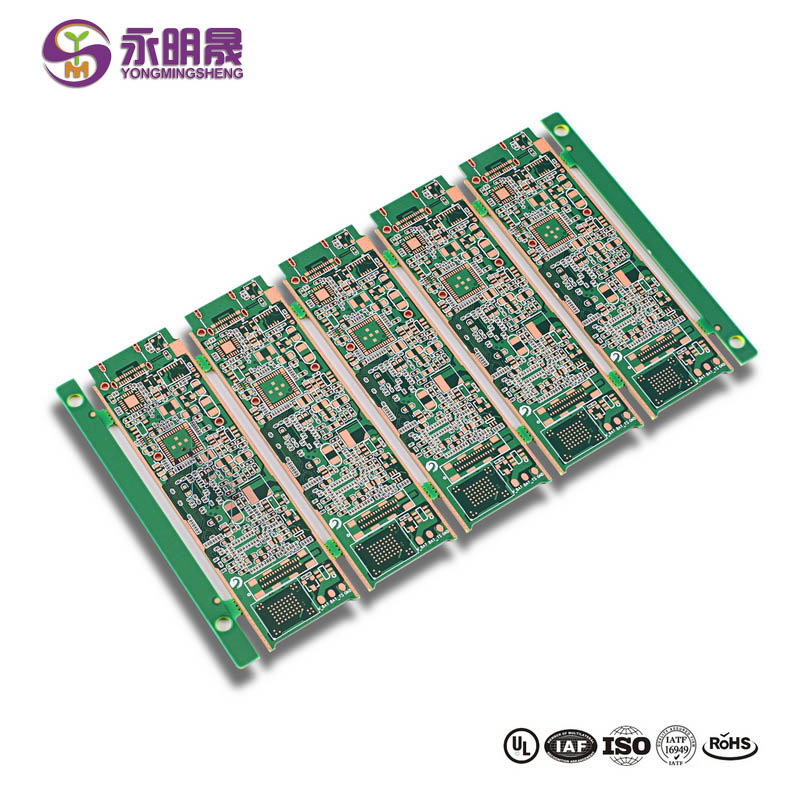Introduction
Double sided printed circuit boards (PCBs) are the most popular PCB used today. A double sided PCB, as opposed to a single side, is used in higher technology electronics because they have two-sided traces with a top and bottom layer.
You can imagine a double sided PCB as simply two single sided PCBs on top of one another. This explanation seems obvious when you explain it this way, but the layers involved in a double sided PCB are no more complicated than a single sided PCB, there are just two of them on either side.
When your PCB is double sided, there are closer and more routing traces available because you can alternate between a top and bottom layer rather than just relying on one layer as you do with a single sided PCB.
With a double sided PCB board, you can mount copper and other components on both sides of the circuit board, allowing the traces to cross over one another. This allows for a more complex circuit to be built, therefore increasing the utility of the PCB.

How do you make a double sided PCB?
The construction of a double sided PCB is not too different from a single sided PCB. There are some exceptions, of course, one being that some layers are laminated on both sides of the circuit board. We’ll go through the double sided PCB assembly process below.
The base of the double sided PCB is made up of an insulating material called substrate. The substrate is mainly fiberglass epoxy resin. The type of base material used is what defines if a PCB board is made of Flexible PCB or Rigid PCB. In double sided PCBs, copper foil is often laminated on both sides of the substrate.
Solder mask, which helps protect the rest of the PCB, can be found above the copper foil on both sides of the board, and silkscreen can be found above the board’s solder mask. However, the silkscreen is mainly used to add symbols and characters on the outside of the board, so someone looking at it can understand the functions of the board.
All of the layers that you find in a double sided PCB are also found in a single sided PCB; the only difference is that each layer appears on both sides of the board as opposed to one side, hence the name.
When should you use double sided PCBs?
Because there are many benefits to using double sided PCB, which we’ll go into later, they have a wide variety of electronic applications. The versatility of double sided PCB will allow you to use it on projects like:
* Industrial controls
* Power supplies
* Converters
* Control relays
* Instrumentation
* Regulators
* UPS systems
* Power conversion
* HVAC
* LED lighting
* Hard drives
* Printers
* Phone systems
* Power monitoring
* Automotive dashboards
* Line reactors
* Test equipment
* Amplifiers
* Traffic systems
* Vending machines
There are uses for double sided PCB beyond what we have listed here, but this non-exhaustive list shows you just how functional double sided PCB can be.
Anytime you need to save time, money, or increase capability is an excellent time to use double sided PCB. There’s no one project that it’s best suited for because it has so many different applications in the field of technology. However, we’ll go into more detail about the benefits of using double sided PCBs below.
Benefits of double sided PCBs
We mentioned earlier that double sided PCBs are more useful in creating higher technology electronics because they have two-sided traces instead of one. This provides a lot of benefits for those using double sided PCB in their industry.
Perhaps one of the most important benefits of using double sided PCB is that they help reduce overall cost. In addition to having a relatively lower price compared to single sided PCB, double sided PCB also provides more flexibility for designers while simultaneously reducing the size of the circuit board itself. Smaller board sizes can also help further reduce cost, which is another plus.
PCB double sided is also associated with increased circuit density and an intermediate level of circuit complexity. Increased circuit density often helps contribute to lower cost as well, as compared to more complex, multilayer PCBs.
Double sided PCBs are often a better choice than single sided PCBs because of their complexity. If your circuit board is more densely populated to connect a lot of components, it’s better to have some components connected to the bottom side rather than all on one side.
If you’re unable to change the size of the board size, and you need to route Vcc and GND on a single board, picking a two-layer board and routing Vcc and GND to the bottom layer will help you out.
If you intend to sink or source current, choosing double sided PCB will most likely make more sense because of the top and bottom layer. You can use the bottom layer as a ground copper pour. For all of these reasons, double sided PCB is often the ideal choice for most professionals working in the technology fields because it’s much easier to use and is much more flexible when you do use it.
High-tech is developing rapidly in all walks of life. The equipment and technology they need to put forward higher and higher requirements on the circuit board. Single sided circuit boards can no longer meet the needs of high-tech. So people have developed double sided PCB boards, but why do researchers choose to manufacture double sided circuit boards?
Summary
All double sided printed circuit boards have two copper circuit protection layers on both sides to further protect the circuit board. At the same time, PCB designers improved the double-sided PCB boards’ layout based on single sided PCB boards. Both the top and bottom circuit boards can use through-hole routing, and the lines can be close to each other, and more lines can be placed.These conditions have confirmed the broad application of double sided printed circuit boards in current electronic equipment. Through the above analysis, I think a double-sided PCB is more suitable for you.
Learn more about YMS products
People also ask
Post time: Jun-28-2022



